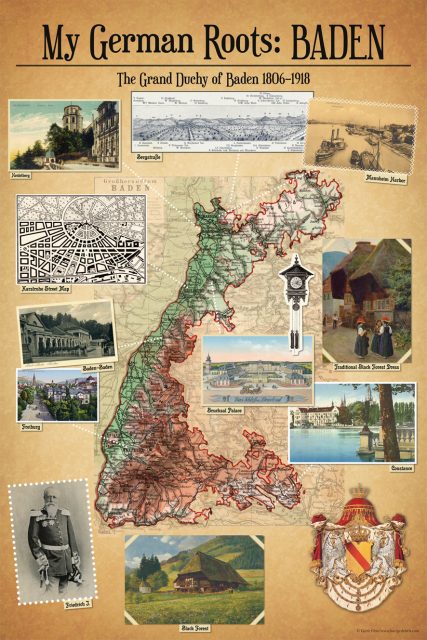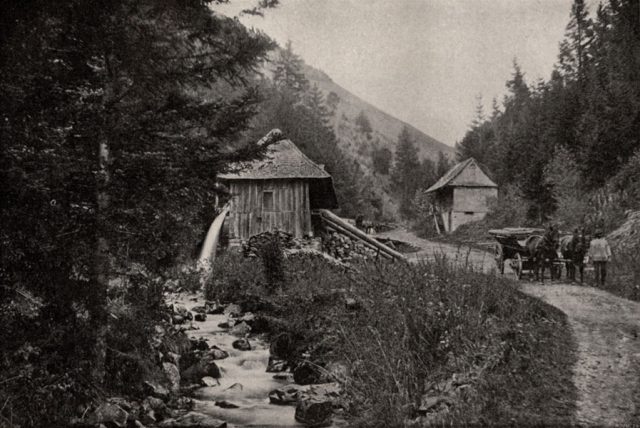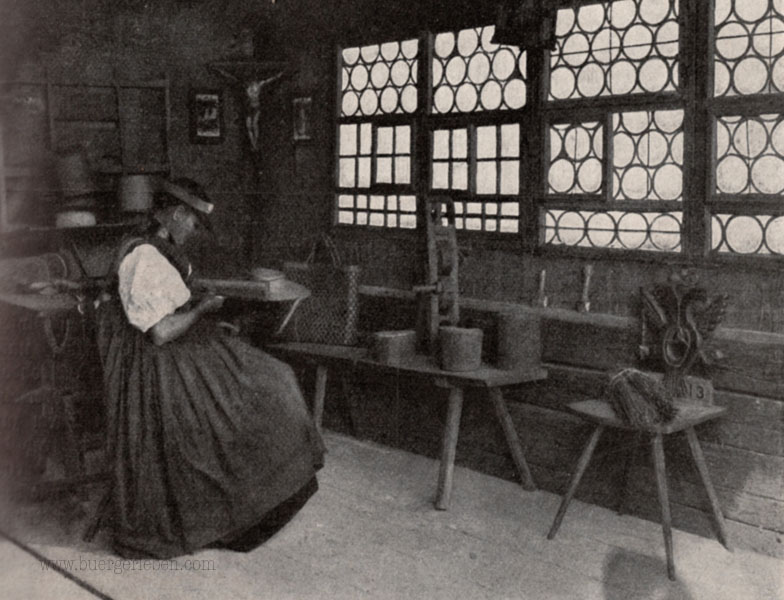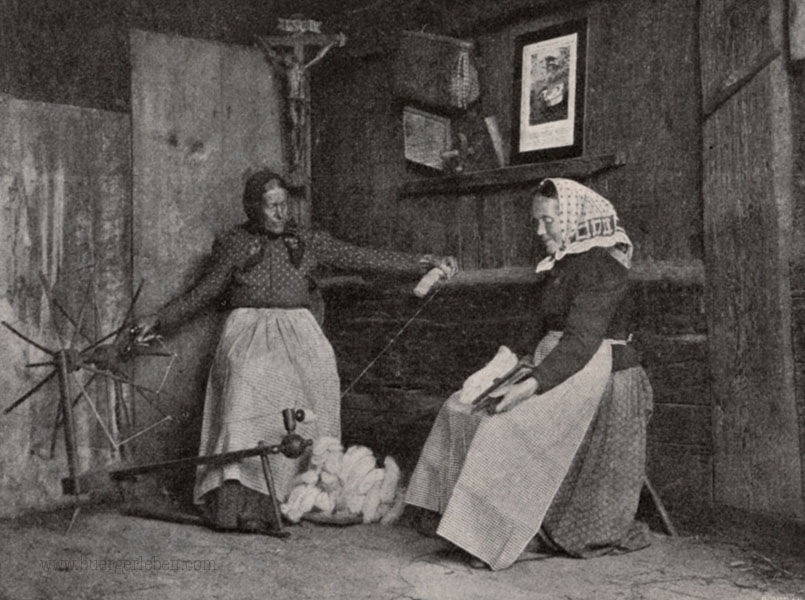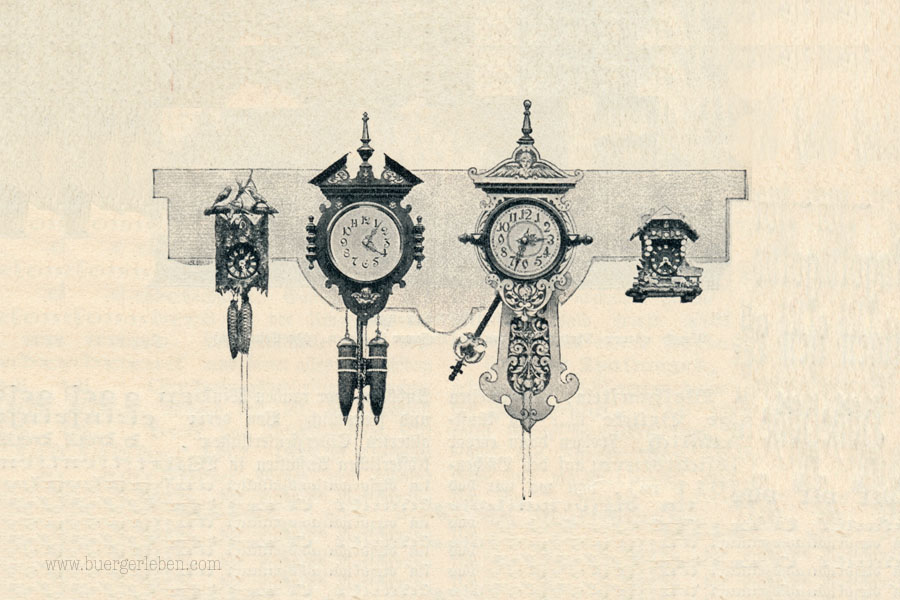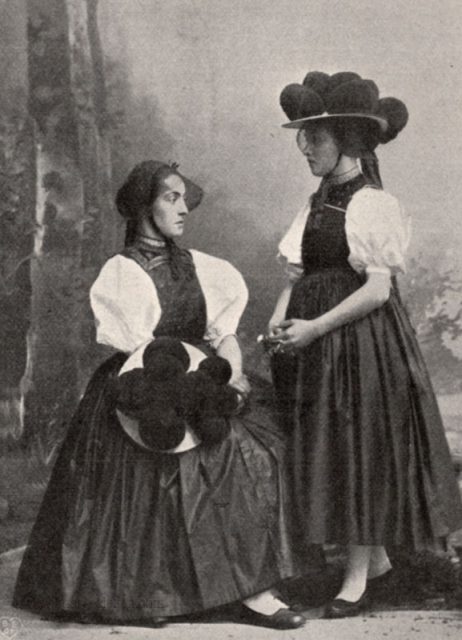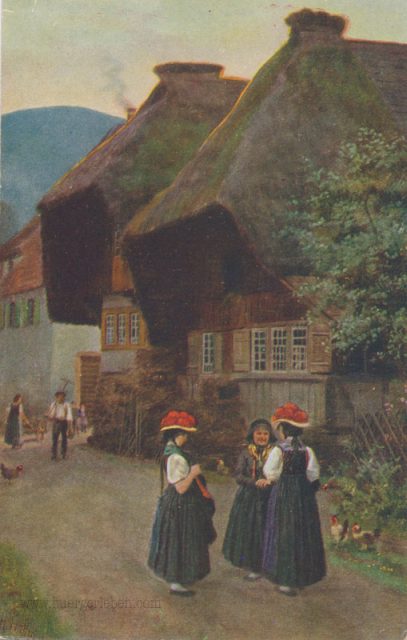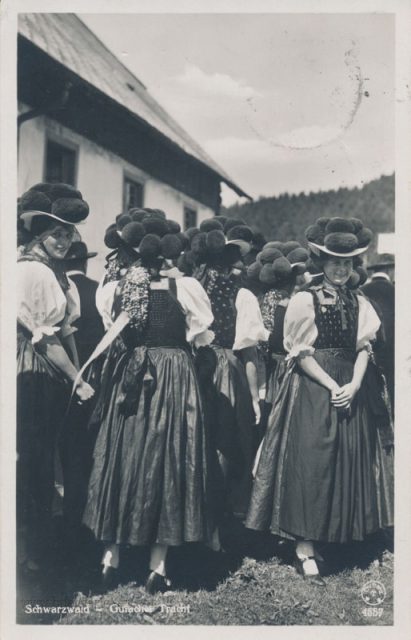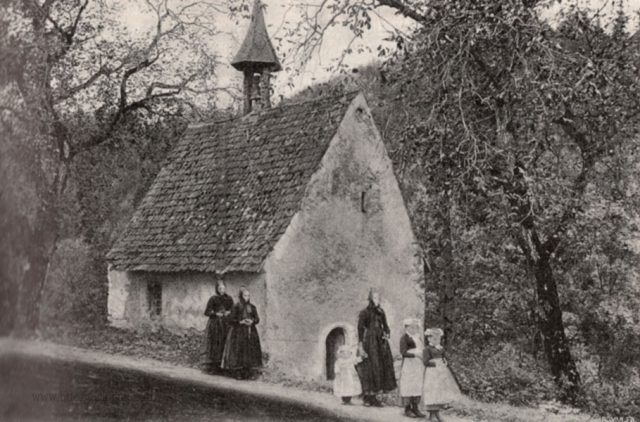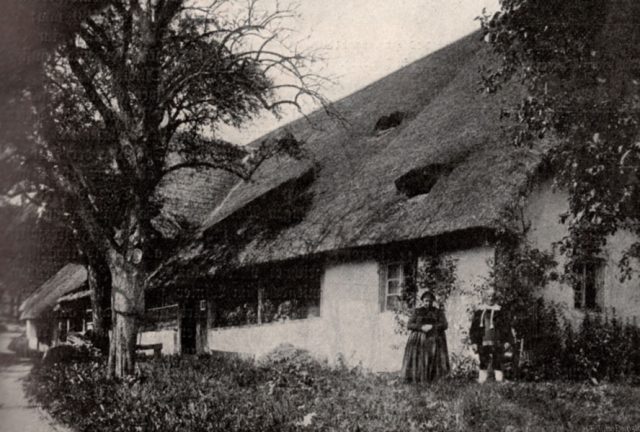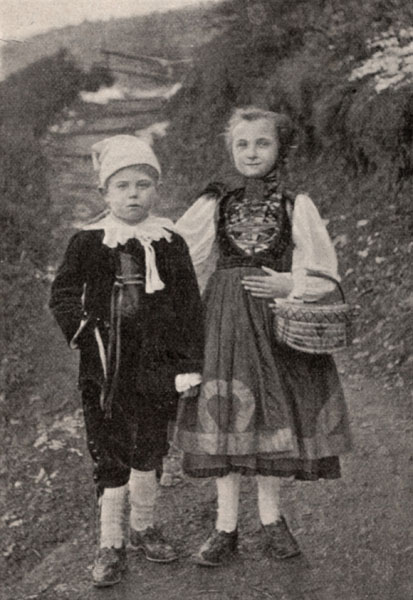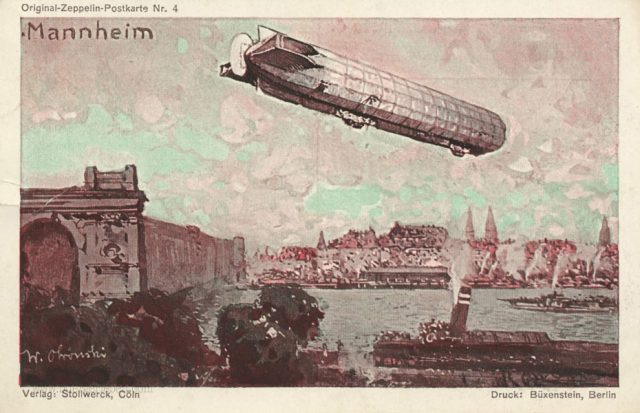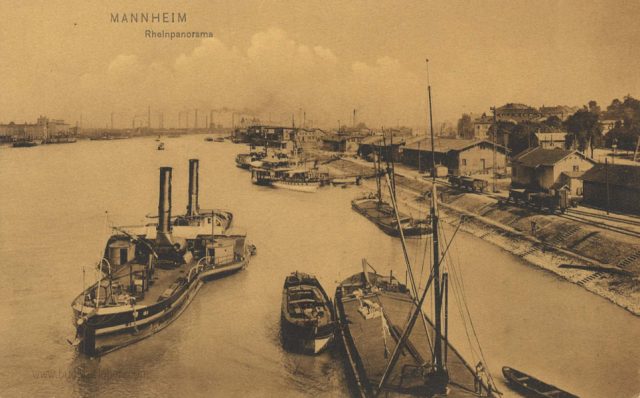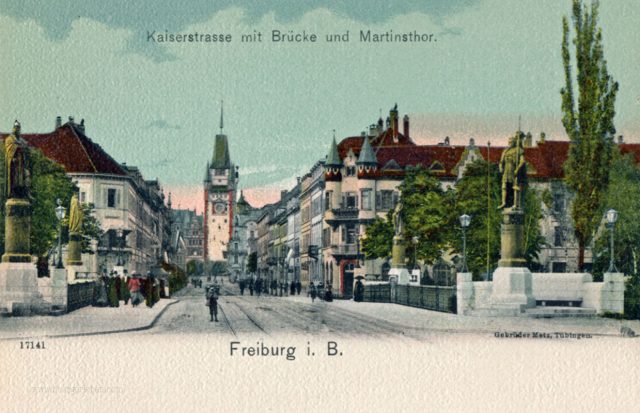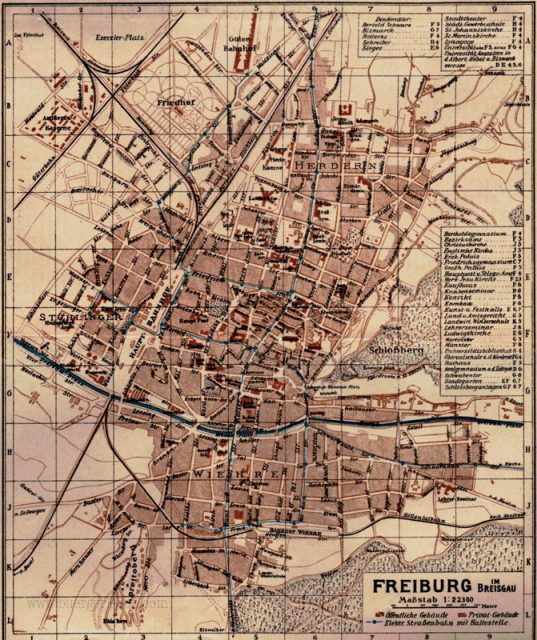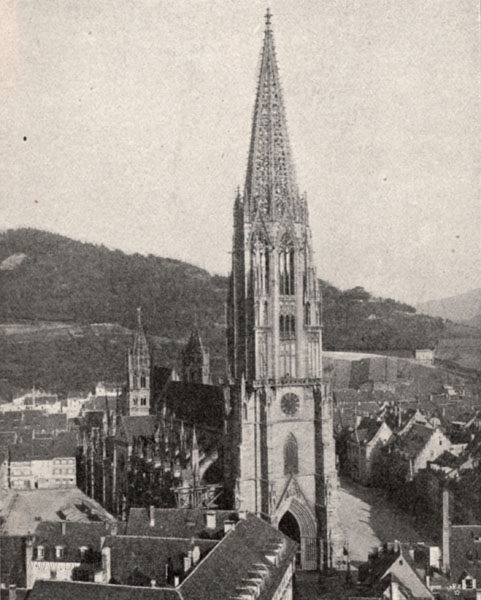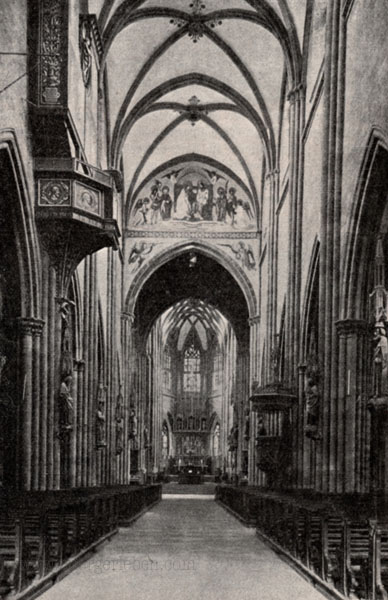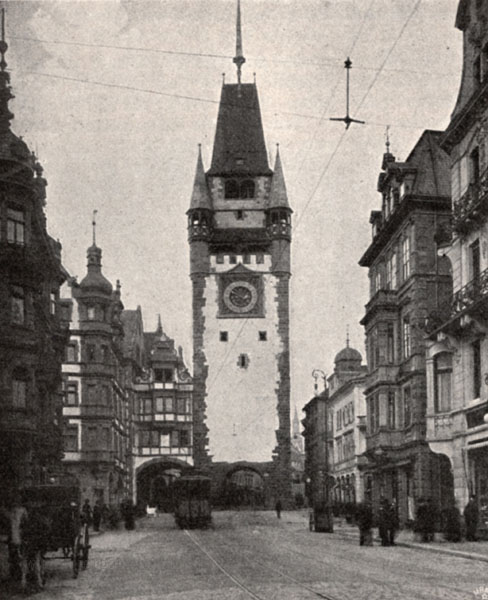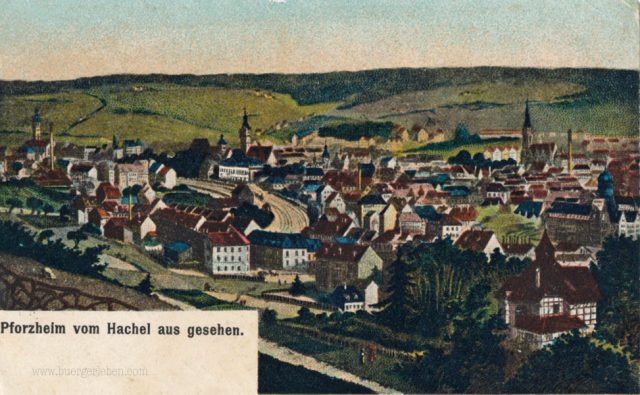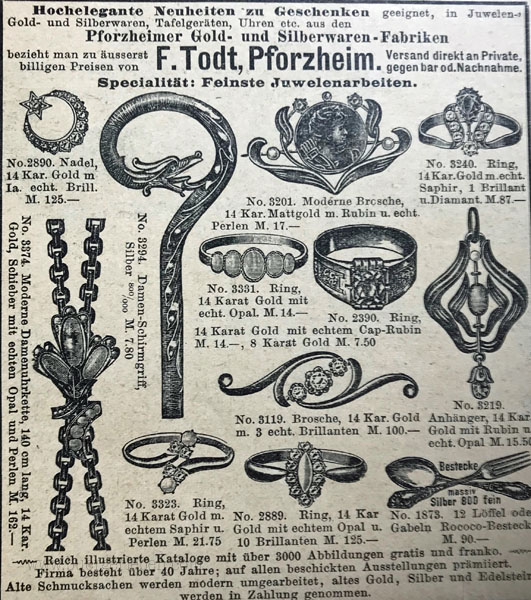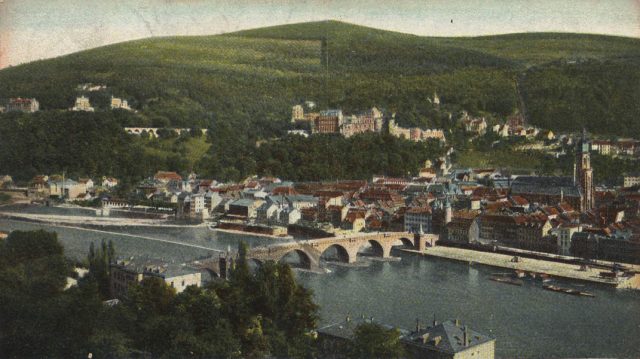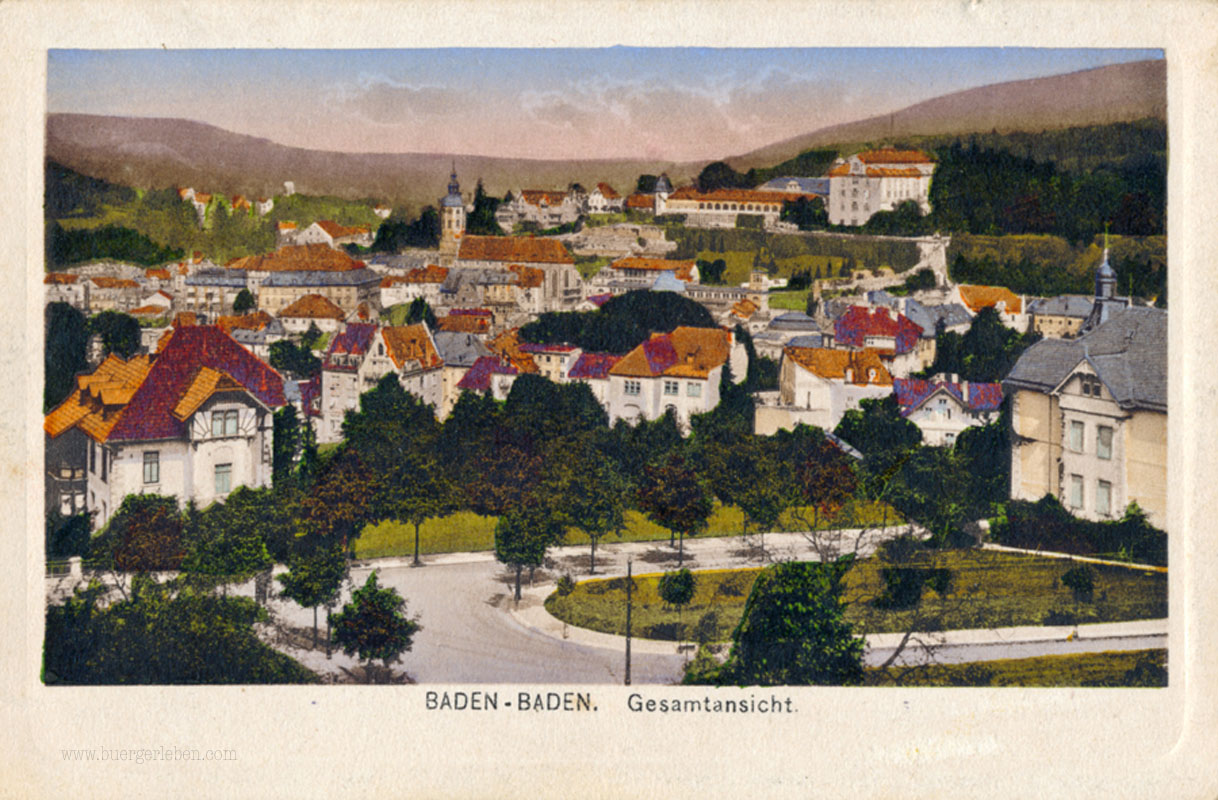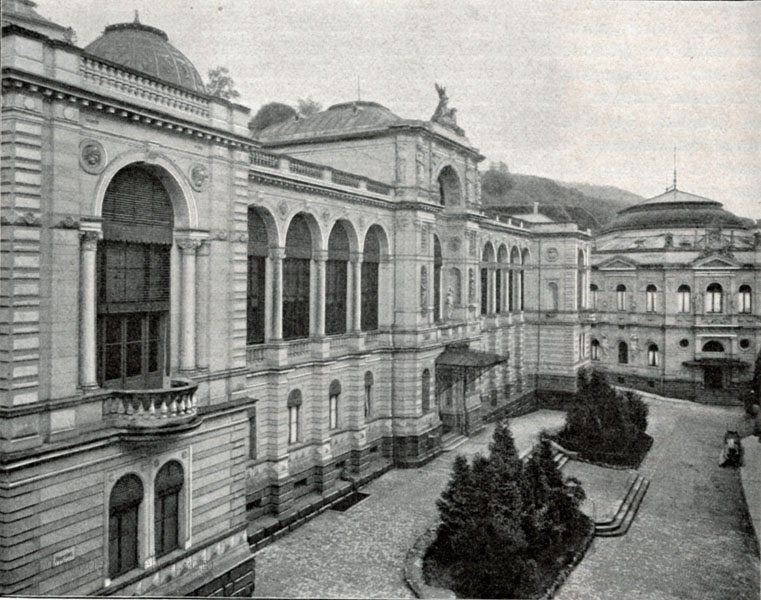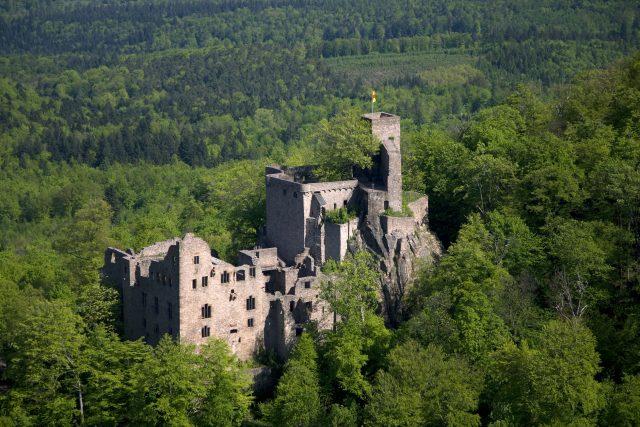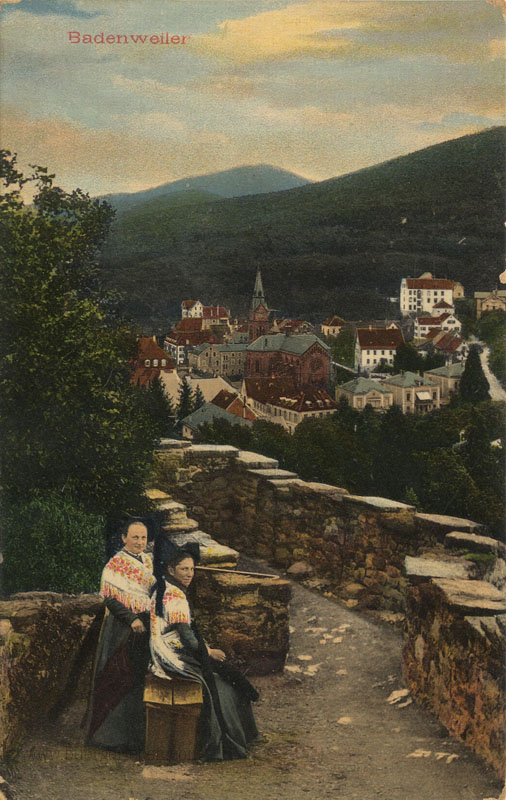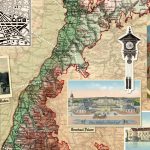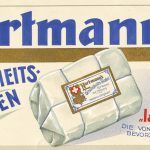A look into the state of Baden: from black forest to Heidelberg – regions and cities (and how the people made their livings then…)
Click here for ordering this art print online
The history of Baden is exciting, in this article I talk more about it.
But it is almost even more exciting to look at what life in the country was like! What distinguished the Black Forest from the Odenwald (in German: “forest of the odes”), how did the inhabitants earn money and what did Baden’s largest cities at the beginning of the 20th century look like? I will tell you all about that later. For this article, it was original sources that were the most helpful, mainly books and pictures from this period.
For all those who are more interested in the local area, I have linked the described areas and cities again:
The Black Forest (and the Hotzenwald)
The Odenwald and the Franconian mountains
The cities:
Baden Baden (back then called Baden)
But I would be glad if you read the whole article 🙂
The Black Forest
A person from the Black Forest lives in the countryside, wears traditional costumes, produces cuckoo clocks and eats Black Forest cherry cake on Sundays. The cliché is the same today as it was back then.
The “Regional Studies of the Grand Duchy of Baden” of 1904 recounts the following:
About the population density:
“The Black Forest has a low population density, the lowest in Baden; in St. Blasien it is 37.8 persons on 1km2, in Bonndorf 40.9 and Neustadt 43.4.”
The reason behind the low population density is explained:
“Incidentally, it is the practical mind of the Alemannic peasant which has prevented overpopulation. In most areas, where a large area of land is already required to feed a family because the land is low-yielding, he has introduced the indivisibility of farm property, and the government has rightly sanctioned it (in this respect, granted it). After that, the youngest son or, in the absence of sons, the eldest daughter becomes an heir of the undivided estate. The siblings become the farmer’s day laborers or settle down outside the home parish; a circumstance which pushed the Black Forest house industry and the Black Forest trade and prevented the emergence of a rural proletariat. “
This was mostly the case, although there were also some areas where the ground was divided amongst the children, such as in the Hotzenwald.
About the houses in the Black Forest:
The richness of forests in the Black Forest provided plenty of wood as building material. And when there is no limestone and loam in the gneiss and granite areas, the stones are of no use to the farmer anyways, as he must build from wood. Since winter lasts eight to nine months and the snow cuts off the access to other people living further away, the person from the Black Forest keeps his belongings together under his roof. As he must be able to access his cattle and barn from the living room, there are covered corridors and wood galleries under the protective roof, which allow for traffic within the house from room to room.
This is the reason for the high construction; downstairs on the ground floor, which is built on stone, there are stables for cattle, along the outside of the house there are stairs to allow the ascent to the upper floor, into the wide corridor with the kitchen and the chambers, and moving along into the wood-paneled living room. Here, there is the big tiled stove, which is surrounded by a cozy stove bench form the “Herrgottswinkel” (in German: “the lord’s corner”): between the windows with the numerous small plate hangs the flower-decorated crucifix in the corner of the wall; underneath, the wooden bench stretches along the wall; in front of it stands the big table, around it the wooden carved chairs. The chambers are adjoined to the back of the house by the huge barn.
The people from the Black Forest do not only build their houses on a hillside to protect them against the weather, but also to be able to drive into the pantry with the hay wagon from outside, which is behind and above the living rooms. Thus, the house forms a self-contained world, to which a bakery, sawmill or small chapel often belongs. And in front of the house is the bubbling fountain. The house also houses the relatives of the farmer and the entire workforce of the farmstead. When one cannot work outdoors, necessities such as clothes and food, are made in one’s home.
This idyllic description explains the practical aspect of the Black Forest houses very well. Naturally, they were not designed that way because they fit well into the landscape and looked nice.
And what did one live from in the Black Forest?
First of all, it says:
Cultivation from the field does not significantly contribute to food reserves, since the summer is too short and there is not enough time for all the fruits to ripen. Grain crops make up only 18.6% of the agricultural area in the northern and central Black Forest, and a little more in the southern part. This small field must also provide food for cattle. It is mainly the livestock, forestry and pasture farming that nourish the resident; sometimes growing fruit in protected locations and collecting berries in the forest.
The forest made up almost 50% of the entire Black Forest area. Much was cultivated on the land, from oats, “Winterspelz” (a type of spelt) and rye, to ” hop, chicory (which was a coffee substitute) and sugar beets in retail plants in the middle and southern part of the Black Forest ”
Additionally, one lived from the industry:
Most importantly, the exploitation of wood, which serves to heat the fire and is processed into cellulose. Additionally, the burning of coal, resin production, the burning of carbon black (carbon needed to make various products, such as ink for printing) tinder preparation, the boiling of pitch and potash, rosin (a product created tree resin which was used in the manufacture of sheet resin and paints), and turpentine oil, all provide a source of income for the people.
Rafting is losing its importance: the fine trunks are cut in the sawmills. Here, the focus lay on the production of coarse wood products, such as tubs and boxes. It was also here that brushes were made.
The “pondering beings” of the Black Forest, to whom seclusion was attributed to, also exploited the forest in a finer way, through watchmaking. In the beginning, only clocks with a balance wheel mechanism, made entirely of wood and consisting of only three wheels and no special effects, were made.
The carved case, the percussion, the cuckoo and the quail were gradually added. Thus, the demands became greater, until the watch industry was no longer dependent on the Black Forest, as wood was replaced by metal. Instead, music boxes were made.
Straw-plaiting may have been developed because of the lack of activity the people suffered from while watching their cattle graze.
The watch industry was an important economic factor of the Black Forest, but not only watches were made.
Traditional costumes (in German: “Tracht”):
And what about the costumes? Surprisingly, it was feared even then (in 1904) that they would disappear:
As roads and railroads allowed access to the mountains from all sides, and the woodsmen took part in the great traffic, the peculiarity of customs and customs diminished, including the folk costume. The basic condition of the customs was the home industry: when the farmer ceased to spin and weave flax, and sell and buy products, he started to wear modern clothing which was introduced along with other cheap factory goods.
This development was certainly not very advanced in the 19th century – there were different costumes and they were worn. And they have survived to this day, even though they are more folkloric today.
In the monograph “The Black Forest” by Ludwig Neumann, published in 1902, it says about the traditional costumes:
In many regions, picturesque costumes are worn, more by the women than the men and especially on Sundays and public holidays, as well as on festive occasions. The production of these is very complex and there are now active associations which seek to preserve them. The traditional costumes are not beautiful everywhere, but their peculiarity, which varies from valley to valley, arouses the interest of the spectator.
Finally, one can find a few words about the people from the Black Forest and their religions in the description:
All in all, the people from the Black Forest are a healthy people and hearty when they have to. They are mostly Catholic, which is a result from the country’s historical conditions. Only the Baden-Durlach and the formerly Württemberg districts, such as Schiltach, Hornberg, St. Georgen, are Protestant.
So they are actually pretty nice people – except for the “Hotzenwäldler”! I will once more refer to my time spent studying in Constance (formerly Baden): several fellow students came from the Black Forest, but nobody from the Hotzenwald. If so, then they had lived “on the edge” of the Hotzenwald. A mysterious area, this Hotzenwald! The dubious reputation of the Hotzenwäldlers existed even then, our book says the following about it:
The mountainous region between the Rhine, Wehra and Schlücht is the “Hauensteinerland” or the “Hotzenwald” … With its harsh climates and long-lasting winters, the Hotzenwald consitsts only of forests, meadows and pastures; the little farmland must generate the food for the cattle. Most of the economy is based on livestock; additionally, on the utilization of the native products, on the burning of charcoal and the boiling of nitric acid, on woodwork, but this is only done for the people’s own needs, for Austria did not trade with the country above it. Here the “Anerbenrecht” (see above, the inheritance to just one heir) would have been useful!
As the people from the Hotzenwald live in the highlands without any markets, are constantly engaged in a fight with the unfertile soil and suffer the consequences of the fragmentation of commodities, they have become bitter and rowdy. An unmixed Alemannic people are the farmers from the mountains, who speak little and can survive in any weather conditions, who stand strong through their incessant Bible teachings. The old traditional costume from the time of the Reformation with its mufti shirt and knickerbockers is now disappearing, just as the real “saltpetrers” are dying out.
Who were the “Salpetrer “? They were insurgent peasants in the 18th century from the Hotzenwald, who were named after their leader, the nitrate maker (in German: saltpeter) Johann Albiez.
But I must relativize the above negative presentation – my fellow students from the Hotzenwald outskirts were very nice, and while they could survive any weather, they were not frantic, taciturn or bitter!
The cities
- Capital Karlsruhe – the drawing board residence (134 000 inhabitants)
With 134,000 inhabitants, the capital of Baden, Karlsruhe, which was situated next to Mannheim, was one of the two major cities in Baden. We already spoke about the origin of Karlsruhe in the history section. It was planned as a fan-shaped as a city with its castle in the center. Karlsruhe was the seat of government “with numerous state and court authorities” and simultaneously the main residence of the grand ducal family. The industry also prospered here:
The industry is very lively. Karlsruhe has an ammunition and weapons factory, a mechanical engineering company, sewing machines, cement goods, ice cream, cigars, silverware, machine tools, perfumery, soap, wallpaper, potato flour, car and furniture factories, iron and iron foundry , stone sawmilling and polishing, dyeing, a society for electric industry, stone and book printing, steam-fur-hair spinning, big beer breweries, a minting institution, etc.
The horsehair spun in the steaming mill was used as upholstery and to fill mattresses.
The regional and cultural studies of 1911 also state: “Karlsruhe has flourished in recent times”. One reason given for this are its favorable trading routes: “In addition to its large Rhine harbor not far from Maxau, Karlsruhe has ensured that it is the crossroad of many important main routes, both from south to north and from east to west, through the construction of railroads.” So, in all four directions!
Incidentally, in 1893, the first German girls’ grammar school was opened in what was then the state capital. In its first years, there were many concerns over the school, which was initially financed by private funds: would the school be able to finance itself and would the students really be admitted to the Abitur (the German equivalent to A-levels)? They were! The school was affiliated to the secondary school for girls in 1898 and became a public school. The first four students passed their Abitur in 1899. The Lessing Gymnasium still exists, although it is no longer only a girl’s school.
Today, Karlsruhe is no longer the state capital, but still the second largest city of Baden-Württemberg, after Stuttgart. As the residence of law, the city houses the Federal Court of Justice and the Federal Constitutional Court.
- Mannheim – largest city and transport hub
“200 years ago, it was still completely insignificant” Neumann’s regional studies states about Mannheim. But at the time of the book’s publication in 1911, it was the largest city in Baden and had “flourished as a trading and transport hub”:
Mannheim is the largest center for trading goods in southern Germany. The goods arrive on ships and continue mainly to southern Germany, Switzerland and Austria. The goods are mainly commercial: cereals, mill products, wine, hops, colonial goods, coal, iron and iron goods, drugs, wood, paint, paints, especially petroleum. Shipment is facilitated by extensive port facilities (there is a state port with the large “Mühlauhafenbecken” between Neckar and Rhine, an urban industrial port at the Rhine port, which combined provide 223 hectare of surface area), which cost of 50 million Mark to build and are the largest such installations in the country.
Mannheim benefited from its favorable location between the Rhine and the Neckar entrance.
It was therefore the seat of several of the largest Rhine shipping companies. But it was never an “insignificant” city; even in history, Mannheim appears as a former capital city with a corresponding castle. It was almost completely destroyed during the Second World War and rebuilt. The castle is now used by the University of Mannheim and can also be visited.
At the same time, it was already an important industrial city:
The industry consists of metal processing, engineering and an iron foundry, and is made up of more than 100 companies and 10,000 workers …
In addition to these key industries, there were other interesting companies in Mannheim. Meyer’s Lexicon says the following:
6 planning mills, 8 furniture, barrel and brush factories, 4 briquette factories, a mirror factory with 400 workers, a wallpaper factory with 200 workers, a corset factory with 400 workers, a sugar refinery, an important brewery, the production of yeast, cigars and bed springs, large flour mills, large polygraphical enterprises, etc.
To this day, the metal industry is very present in Mannheim, in addition to the electrical and chemical industry. The University of Mannheim is one of the most prestigious business universities in the country – it was founded in 1907 as a municipal commercial college and became a university in 1967.
- Freiburg (83 000) – the most beautiful university town
In the descriptions of Freiburg from the beginning of the 20th century, its favorable position is praised: it is “one of the healthiest cities” because it is rich in water and has a system of silting and complete canalization. Additionally, it has a good climate, created through the mountains and valleys that surround it. The “land and people monograph of the Black Forest” says the following about the city:
“No wonder that Freiburg is so attractive.”
In Meyer’s Lexicon from 1907, the city is described in this manner:
The city consists of the old town, which still has a medieval character and streets in which small, clear streams flow, the suburbs Wiehre and the elegant Herdern, the district Stühlinger and the suburbs Güntersthal and Haslach. The stylishly renovated Martin- and the Schwabengate from the old city gates from 1901 are still accessible. Among the ecclesiastical buildings (4 Protestant, 8 Catholic, one Old Catholic, one English church and a synagogue), the cathedral, now the Archbishop’s Cathedral, comes in the first place. It is a masterpiece of Gothic architecture, even though some of its parts belong to different times.
Two landmarks of the city were already listed: the Freiburg Minster and the streams which flow through the city – which are sometimes called “Bächle” (in German: “little streams”). Freiburg was also known for its university then already, one of the oldest in Germany:
Among the educational institutions, the university is the most important. It was donated by the Archduke Albrecht VI. of Austria in 1457, opened in 1460, and was given the name Albert Ludwig College in honor of the Grand Duke Ludwig I. It includes a library with 250,000 volumes and 600 manuscripts, a rich natural history collection, ethnographic and other collections, a botanical garden, a clinical hospital and other auxiliary institutions. The number of lecturers in 1903 was 125, and that of students was 1962. (Meyer’s Lexicon)
Women were already among these students – from 1900 onwards, Freiburg was the first university in Germany to allow women to study. As of 2017, there are more than 25,000 students and 430 professors (though with almost 3,000 scientific assistants).
Freiburg was also the seat of numerous authorities, some regiments and the seat of the Upper Rhine church province. In the “Black Forest Monograph”, it says:
In fact, Freiburg can be described as a “pensionopolis”, in which civil servants of every category, officers, scholars and merchants from all over the world have made a home. Through this influx, the city’s reputation and spirit has changed greatly in recent decades.
It is later called a very free-spirited city, in the “Black Forest Monograph”. It comes to little surprise that its author, Ludwig Neumann, lived and worked in Freiburg. Back then as well as now, it really is a very lively city with a free spirit!
- Pforzheim (69 000) – the jewelry & gold town
As the fourth-largest city in Baden, it was presented in the Baden region as follows:
“The gold town of Pforzheim forms the northeastern entrance to the Black Forest at the place where Enz, Nagold and Würm open up many paths”
As early as 1800, Pforzheim was regarded as the world’s most important center of jewelry production. And who founded it? The longtime ruler Karl Friedrich von Baden, about whom more details are revealed in the history section. The jewelry production was started through him in 1776 in an orphanage, where at first, watches were made, and later jewelry. I was quickly expanded and exported all over the world.
And Meyers Encyclopedia from the beginning of the 20th century said the following about jewelry production in Pforzheim:
The local jewelry production is very expansive and was responsible for the employment of about 22,000 workers in 1904, which worked in 494 main and 408 side businesses. About 3 million Mark were manufactured for silver, 25 million Mark for gold and 5 million Mark for stones and pearls. The total production amounted to about 120 million Mark.
Even today, 75% of German jewelry comes from Pforzheim and of course the jewelry is still exported to all over the world. The city also has the only goldsmith and watchmaking school in Europe. In the second world war, the city was heavily destroyed – fortunately, the landmark of the city was spared, which is the palace church of St. Michael. Inside the church is the crypt in which the members of the Baden Margrave families were buried until 1860, including its last member Stéphanie de Beauharnais (who is mentioned in the historical text), the wife of Grand Duke Karl.
- Heidelberg (56 000) – city of romantics and students
“I lost my heart in Heidelberg”, is the beginning of the chorus of a well-known song from 1925, which is about love and Heidelberg. The city was immortalized in poems starting a long time ago, in verses and songs by authors such as Goethe, Hölderlin, Gottfried Keller, Mark Twain and Kurt Tucholsky.
(Heidelberg) … in a charming area of the Neckar valley, where the river flows from the mountains into the plain, at the foot of the 566 m high “Königsstuhl” (in German: seat of the king), extends on the left bank of the Neckar between river and mountains in a single main road, 3 km long, from east to west.
This is what Meyers Lexicon says of Heidelberg’s location. Naturally, we must also talk about the two buildings for which Heidelberg is famous:
The largest attraction in Heidelberg is the castle, on a foothill of the “Königsstuhl”, directly above the city and 101 m above the Neckar …
After the Thirty Years’ War, the castle was largely destroyed by the French in 1689 and 1693, then further devastated by lightning in 1764. Well worth seeing is the “Elisabethentor” (in German: “gate of Elisabeth”), the four beautiful granite pillars at the castle well, which were brought from Grand Duke Karl’s palace to Ingelheim, the castle garden with its large terrace, on which the archival statue of Victor of Bushel was placed and from which one has a delightful view of the lower Neckar valley and the Rhine, the blasted tower, the beautiful octagonal tower, the former castle garden, the castle church in Friedrichsbau which is still preserved, where there is an interesting collection about the history of the castle, the Palatinate region and the city. Finally, one can see the well-known, large barrel, which is nearly 7 m in diameter and over 10 m in length and holds 236,000 bottles, in a special cellar vault, which was built in 1751. Recently, there was much agitation against the planned restoration of the castle.
Restoration of the castle? (Fortunately), this has not happened and probably is no longer planned – the romantic ruin is still the landmark of Heidelberg.
The second aspect the city is famous for is its university – the oldest in Germany!:
The most prominent of the educational institutions is the University of Heidelberg. It was founded by Elector Ruprecht 1 in 1386, after Pope Urban VI. gave his consent on the 23 Oct. 1385. Its first rector was Marsilius of Inghen. It was built on the model of the Paris Academy and already had four faculties … After the university suffered hard blows during the Thirty Years’ War under Frederick V, it came under the influence of the Jesuits in 1685 and lost its most important possessions through the Lüneviller Peace, so that in 1802 it was almost closed. After Heidelberg became part of Baden in 1803, the university soon took on new splendor under the Grand Duke Karl Friedrich, who created the institution we know today and gave it the name Ruperto-Carola. In August 1886, it celebrated its 500th anniversary.
This is what Meyers Lexikon of 1907 has to say about the university, which is still called Rupprecht-Karls-Universität today after its two founders. It survived two more wars and their trials and tribulations and is today one of the most prestigious universities. It enjoys a high reputation not only in Germany, but also internationally. No wonder it already said that:
The most important sources of income of the inhabitants are the university and the visitors.
To this day, Heidelberg is a popular destination for tourists from all over the world as the epitome of a romantic old German city, with its old town and romantic castle.
- Constance (28,000) bridge and border city
Mayer’s Lexicon (1907 edition) says about Constance:
… in a charming location at the outflow of the Rhine from Lake Constance, 405 m above sea level, there exists the old town. Additionally, there is the former monastery, the districts Seehausen and Paradies, with their numerous gardens and vegetable fields, on the right bank of the Rhine and the Kreuzling suburbs on the left bank of the Rhine. Among the buildings of the city is the Dome, a Romanesque pillared basilica built in 1052-68.
Today, this landmark is called council again – in fact it was used as a warehouse and trading house for a long time by the Constance merchants, which explains its former name of “department store”. And which sights were pointed out at that time?
A landmark of the city is the department store, built in 1388, which served as a conclave during the Council. Its large hall, in which Pope Martin V was elected in 1417, is now decorated with frescoes from the cultural history of Constance.
Noteworthy are: the Rosgarten Museum, an old guildhall with an excellent collection of natural objects and the history of Constance and its surroundings; the restaurant Barbarossa, where Emperor Frederick concluded peace with the Lombard cities in 1183; the Hus cottage (also known as “Hußenherberge”) at the Schnetztor, where Hus lived and was captured, with reliefs by Hus and Hieronymus, the beautiful harbor with its lighthouse, the new Imperial Mail building, the municipal hospital and other new buildings … which are no longer new buildings today.
Incidentally, all listed buildings and museums still exist today. One more comment on Jan Hus and a brief look back to the Middle Ages: this Czech scholar and reformer criticized the church doctrine and spoke before the Council of Constance. However, he was unsuccessful and sentenced in 1415 as a heretic to die at the stake.
Important for the industrial development of the city:
In 1863, Constance was connected to the main line of the Baden State Railway Mannheim-Basel-Konstanz and in the 19th century to the Swiss Federal Railways: in 1871, to the route to Romanshorn and in 1875, to Winterthur.
So, it became the railroad junction – therefore, its infrastructure was well developed. One mayor who did much for Constance’s infrastructure at the time was Max Stromeyer. Even today, a street is named after him: The good transport links of the city, also by ship over Lake Constance, were an important factor in the economic boom and the settlement of many companies:
The industry is made up of cotton weaving and printing, silk weaving, waterproofing, sacks, jute fabrics, linen and canvas, chemicals, herds, locks and cupboards, quilts, stoves, cement and pottery, soap, light, wallpaper, white goods, letter cuvettes, mineral water, furniture, cigars and folding tiles, on iron foundry, fabrication of agricultural machinery, wood carbonization, etc. (Meyers Lexikon Volume 11, 427f)
In summary, everything, from letter envelopes to cigars was produced in Constance! The population increased and the city prospered!
Today, there is still industry (chemistry, information technology) in Constance, but not as diverse as it was then. However, tourism has become increasingly important and since 1966, the city has a very beautiful university by the lake, which is popular not only in the south of Germany. Maybe it is so popular because the university beach is only a few hundred meters away from the main building? No, of course, only professional reasons are important when people choose Constance.
- Baden-Baden – Weltbad
In Grieben’s guide, it says about the city: “World famous bathing and health resort in a beautiful, forested area; 70,000 visitors annually. “
And Meyers Lexicon says: Baden … is one of the most brilliant and most visited beach resorts in Europe. Although it used to be the old capital of Baden, the city is now very modern, full of sumptuous hotels and magnificent villas and private apartments. (Meyers Lex)
And that really was the case! As a meeting place for stately and well-heeled guests, it was the “summer capital of Europe”, while the winter capital was Paris.
Naturally, Baden’s thermal baths are famous: “known since Roman times, they rise from the gneiss, granite and shales caves and supply about 750,000 liters in 24 hours.” Sounds like a lot!
Above the well, there is the older steam bath; the “Friedrichsbad” (in German: “bath of Frederick”). is the most elegant establishment in Europe. Also magnificent is the Empress Augusta bath, which is a bath for women. Bathtubs with thermal water can be found in most inns; for poorer spa guests, there is the “Landesbad” (in German: “country bath”).
The Friedrichsbad was named after the Grand Duke Frederick I and was a bath for men, the Empress Augusta-Bad, according to its name, a ladies bath. The Friedrichsbad still exists today, although no longer in its original condition and accessible to both sexes …
Inaugurated in 1877 after a long construction period, it was considered to be the most beautiful spa bathhouse in Europe at that time. The Augusta bath was demolished in 1962. The bath for poorer spa guests is called the “poor people bath” (in German: “Armenbad”) in brackets in the guide and the facility states that it “is similar to the Friedrichsbad in terms of its furnishings, only simpler”.
Naturally, there was a drinking hall (which still stands today) and a “conversation house” for the spa guests, which “forms the center of the bath life. This is where the company comes together, especially in the evening“, says the travel guide. All sorts of entertainment are mentioned (for example, theater, art, horse racing).
An aspect of Baden-Baden which is typical again today was not there: the casino. Through its income, the expansion of the exclusive spa resort at the beginning of the 19th century was made possible, but it was closed in 1872 – and it remained closed until 1933.
So, Baden lived mainly off the spa guests – and it did so very well. The nearby Black Forest was perfect for excursions and rides. A destination was mentioned in the history section, the old castle Hohenbaden: “… a well-preserved ruin in the north of the city on the Battertberge, from which one had the most magnificent view.”
And last but not least: Badisch-Sibirien: The Odenwald & the Baden-Franconia territory
Let’s start with the Odenwald:
From their manors, “Reisiger”, which were companions on horseback that were mostly armed, and noble ladies hunted with their horses, packs and falcons in the Odenwald, which was rich in game. We ride up on Schuster’s Räpplein, to peacefully receive the presents of the unique woody mountains.
This is how poetic the beginning of the “Baden Transportation book” (in German: “Badische Verkehrsbuch”) from 1912 is. It continues recounting about the Odenwald:
The Odenwald is not a barren forest, as its name suggests. Hardwood of the most varied kind, fertile fields, grain-heavy fields, flower-rich meadows are laid out in harmonious form over it … The mountains are not large, only about 60 kilometers long and 40 kilometers wide. The highest peak, the Katzenbuckel, measures 628 meters.
Only one part was in the area of Baden:
“Two-thirds of the Odenwald belong to Hesse and one-third to Baden”
The guide also tells us how the person from the Odenwald was, or still is:
The people from the Odenwald are simple, frugal and cheerful. They are courteous and hospitable, but also have a mistrust of the unknown. They rigidly cling to their home and church, as well as their customs and habits. Nevertheless, the folk costume is disappearing, only the very old people from the Odenwald still wear it.
Mmh, the question remains, which customs and habits is it that they cling to? Surely only to the virtuous ones … Also, a part of the mountain road was still in Baden – which connected the “flourishing city” Weinheim.
The northernmost city in Baden was Wertheim. Already in the “Frankenland”, it was described in the “Baden Transportation book” as follows:
Where the beautiful Main valley reveals the most enticing of its enchanting charms, where the dazzling green of the pigeons flows into the brilliant azure of the Maine, where the mountains of the Odenwald and Spessart call upon the flood of Maine, Wertheim has found its chosen place on the round earth.
Did I mention that the publisher of the booklet was the Baden state association, which tried to increase tourism? Today, Wertheim is best known for its large designer outlet.
Neumann (the author of the regional studies of 1911 and Freiburg lover) says the following about the Franconian hilly countryside:
The Franconian hilly countryside only has small towns, since its population lacks commercial activity and greater influx of people.
And about the Franconian level, it says almost identically:
… The whole area forms a single agricultural landscape, the “building land”, which is not densely populated and has only a few smaller towns. There are no obstacles for traffic, but there is only one major traffic route which cuts through the area, which runs from Mannheim to the Main near Würzburg.
Which means that it is actually good for traffic, but nobody wants to go there.
And this is probably what the spiteful expression “Badish Siberia” refers to, as the northern part was often called. The above text suggests it, even if it is prosaically formulated: The area was rather sparsely populated and there was little industry. It was dominated by agriculture, but the soil was bad and thus especially the Franconian part was hit particularly hard by the hunger crises by crop failures. It also lacked integration- the Franks in particular felt connected to the Bavarians. And the Baden officials certainly did not want to be transferred to this province in the north, which was noticeably cooler than the more southern regions.
Religion
For the very end, we will have another look at the religions prevalent at the time. How were the religions divided in Baden? Neumann’s regional studies say:
According to the creed, (from 1905, the results of the census of 1910 are not yet published), about 1,207,000 Catholics live in Baden, 770,000 Protestants, 26,000 Jews, 8,000 others. Of the 100 inhabitants, there are 60 Catholics and 38 Protestants as the national average, the small remainder being distributed among Jews and others.
And about the distribution:
The southeastern part of the country, the high Black Forest, the old Baden-Baden Land, Breisgau, Ortenau and the Franconian hill country are almost purely Catholic. The Baden-Durlacher country and the Hanauer country are predominantly Protestant in the middle Rhine plain (near Offenburg). In the remaining parts of the country, as well as in the larger cities, the population is mixed according to religious beliefs.
Unfortunately, I do not have comparative figures for today because Baden does not collect statistical data. One thing is certain, even then the religions began to mix, that is, the Protestant and the Catholic. Even though it was still a taboo in traditional regions to marry a “false believer” of the other religion.
Of course, a “look into the country” always means selecting specific topics and areas – this was difficult to do. There are other beautiful places, landscapes and sights in Baden and other stories worth telling.
Unfortunately, not all can be told here! In any case, I hope to have given you an overall impression of the “country” at the beginning of the 20th century with this article. I would like to thank all those who supported me with this article.
PS: All texts in italics are original quotes from the sources mentioned from the time

